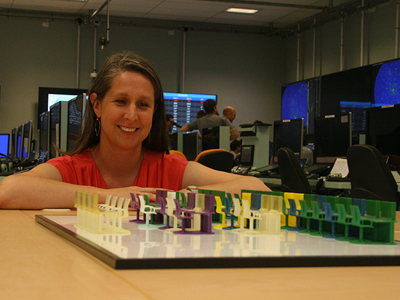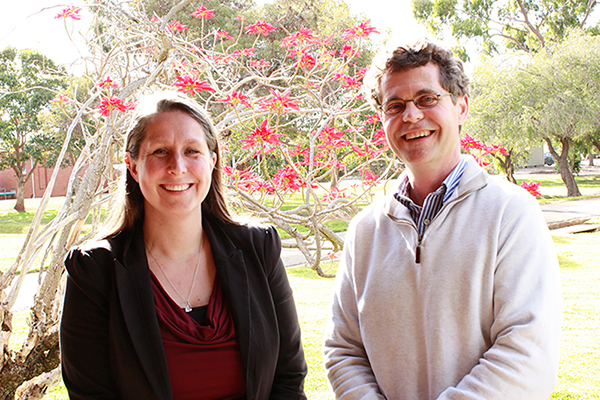The human science behind our Navy ship design

The 2016 Defence White Paper confirmed that the Royal Australian Navy (RAN) will have nine next-generation frigates hitting the water during the 2020s.
Defence scientists Susan Cockshell and Kingsley Fletcher have been brought on board by the SEA 5000 Phase 1 (Future Frigate Design and Construction) project to ensure that the design of the Future Frigate operations room support effective and efficient RAN operations.
Cockshell and Fletcher are human factors scientists that were involved in the redesign of the RAN Anzac Class frigate operations room as part of the Anti-Ship Missile Defence Upgrade project.
“The RAN had experience with us and could see the value in what we do, and asked us to help with the Future Frigate operations room design,” says Cockshell.
“As human factors scientists, we stress the need for user-centered design and understanding user needs early on.”
“It’s very positive that the RAN has started thinking about what its crew needs at this early stage, and wonderful to be involved in that process.”
Cockshell and Fletcher have developed some conceptual layouts based on a literature review of operations and control rooms in government and industry. Working with other DST hardware and software system developers they have mocked-up key elements of the rooms and recruited RAN personnel to perform key activities in the room, to understand how design decisions impact on the way they work.
“We are interested in the interactions between crew, trying to understand the importance of the interactions and how effective different room layouts are in supporting those interactions,” Cockshell explains.
Over several days, these RAN personnel were put to work using four operations room layouts by Defence scientists.
The first layout was ‘mission control’ - like NASA - with everyone in three rows facing large screens at the front. The second layout was more experimental, with each crew member isolated to test the crew’s communication requirements. As Cockshell explains, “We were asking them ‘If you really can’t see anyone, who do you need to talk to?’’”
The third layout was a ‘market place’ layout with groups of operators facing each other. For the final layout the RAN team used a scale model to come up with a design to try out. They decided on two parallel rows of consoles facing the main wall screens, with a commander at the rear, creating a Star Trek operations room look.
The layout redesign can take place extremely fast due to the specially designed ops room lab, featuring a grid of underfloor cabling, which allows the consoles to be reconfigured in less than two hours.
During each layout, the crew used simulated systems to conduct anti-submarine and surface warfare scenarios for ninety minutes.
The crews also used a DST Group developed sonar simulation system, which provides a realistic simulation of the undersea acoustic world with the ability to hook into the broader simulation system.
A combination of data was then gathered, including feedback from the RAN personnel, to identify user needs and requirements, to inform the next stage of this big project.
Further activities will then focus on untested aspects of the design such as the integration of uninhabited aerial vehicles (UAVs), and potentially more detailed design when specific systems are selected.
“Human factors science is on the boundary between psychology and engineering. It’s where engineers start to leave the technology and start designing for humans who use the technology,” says Fletcher.
“I don’t think that Human Factors is ingrained in the Defence acquisition process yet. It still comes down to individuals who’ve seen the benefits and want it for their projects,” Cockshell adds.
“But the more we demonstrate, the more people will see the value and eventually user-centered design will be a key part of all acquisitions.”


